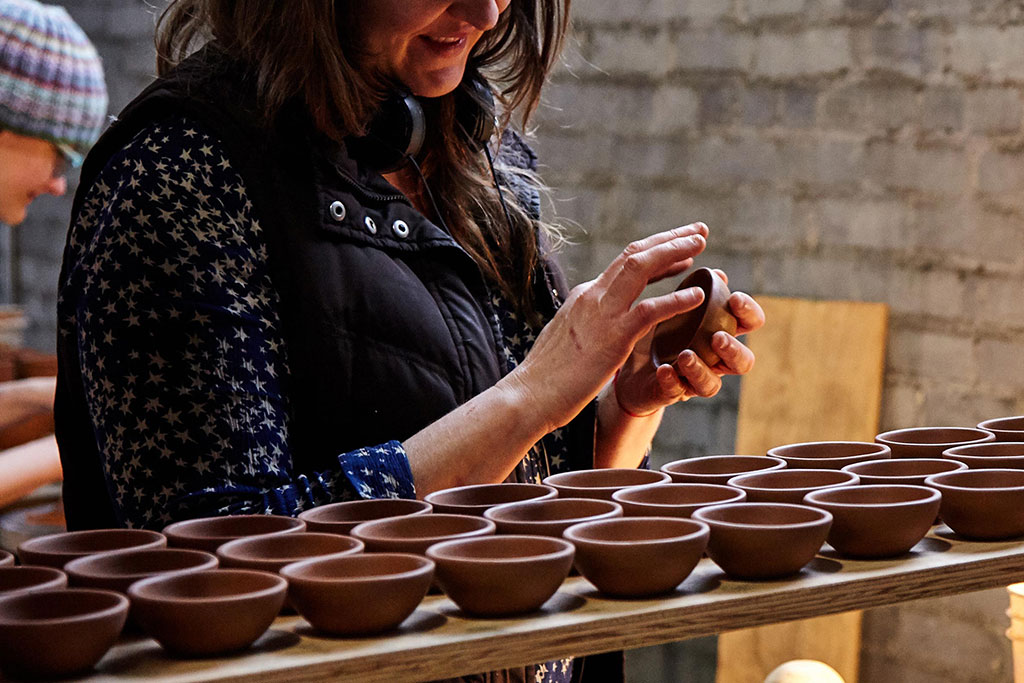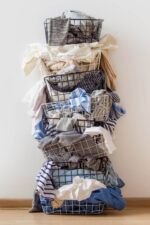Beautiful Utility in the Kitchen
Photos as noted
In this age of competitive consumption, where our desire to buy new things subconsciously stems from a “keeping up with the Joneses” mentality, it can be difficult to ascertain between what we need and what we want.
This often results in excess clutter in our homes. But what if there was a better way to distill purchases into only what truly resonates as special and useful? When it comes to the kitchen, it’s especially important to arrive at the intersection of form and function— where the kitchen items you buy look as good as they perform. Three companies weigh in on what it means to have products that are both aesthetic and practical.

Teakhaus (wooden cutting and serving boards)
Diana Sámano Ramos, marketing manager Kitchen
Philosophy: We believe that cooking is more than just preparing food—it’s also an art form that deserves to be elevated. With this in mind, we actively encourage our customers to make thoughtful choices that encompass both exceptional quality and affordability, enabling them to inspire their cooking creativity while having a well-equipped and efficient kitchen.
Thoughts on aesthetics: The true joy of cooking lies in the experience of using the finest tools. That’s why we’ve transformed one of the most beautiful woods on earth, teak, into cutting and serving boards that go beyond mere functionality. We also recognize the importance of sustainability. In today’s world, we are mindful of what we cook and eat, but it is equally essential to consider what we use to prepare and serve our food.
Kitchen pet peeve: The excessive accumulation of utensils and gadgets. While it can be beneficial to have a range of tools for specific cases, having too many can make it challenging to find the exact tool required, leading to frustration and wasted time during meal preparation. When you prioritize the use of versatile tools that genuinely enhance the cooking experience, you can reduce clutter and create a more organized and functional kitchen environment.
Advice: Invest in a good cutting board. The cutting board holds a special place in the kitchen, serving as the starting point for every celebration and meal preparation. A high-quality cutting board also acts as a safeguard for your knives. It doesn’t necessarily need to be huge; rather, it should be the right size for your kitchen and your needs.

Town Cutler (knives)
Galen Garretson, founder
On knife making: When I started in 2011, there were maybe half a dozen knife makers in the United States. I am mostly self-taught, but I also worked with master bladesmith Aaron Wilburn on weekends to learn how to forge steel. Prior to making knives, I worked as a chef and had a knife-sharpening service in San Francisco. Making knives is a bit like cooking. You come up with a recipe, and then you have to figure out how to repeat it over and over.
Town Cutler knives: Japanese knives tend to be thin and precise, whereas European knives are a lot more durable. Our knives are somewhere in the middle—not as delicate as Japanese brands but sharper and more precise than some of the European ones.
Thoughts on aesthetics: Nowadays, many people want to buy things that look good, so aesthetics are an important factor in commerce. Sometimes our knives are referred to as pretty knives, but they are also very durable.
Our flagship line is our Classic line, which features a handle made from a solid piece of buckeye burl, a big knot of mixed sapwood and heartwood that can be found on certain buckeye trees in the Pacific Northwest. Burl wood is not only beautiful but also durable and comfortable to hold for long periods of time. Our most popular knives are made from the scrap pieces of burl, which we cast with either blue or black resin.
Kitchen pet peeve: People not washing their knives correctly. You really just need to rinse them with water and dry them off. The only time I use soap is if I’m cutting meat or fish. Soap strips oils from the knives, especially the handle.
Advice: If you could only choose one knife, I recommend an 8.5-inch chef knife. It’s an all-purpose workhorse that does everything.

East Fork (pottery)
Devin Bambrick, director of creative
Kitchen philosophy: Invest in fewer, better things. With a few exceptions, everything in your kitchen should be able to lead multiple lives. A really great knife will get you through most cooking tasks, and we think the same should be true of bowls and plates. Our Coupe, for instance, is a great vessel for plating dinner, but it’s also an excellent small serving dish. Our Bitty Bowls are another example of flexibility: they’re perfect both for mise en place and as tea bag holders, incense catchers, and teensy candy dishes.
Thoughts on aesthetics: Truly great design needs to be both aesthetic and functional. Our company grew organically out of a tradition of Southern pottery that emphasized both sides of the coin: finding profound beauty in a functional vessel.
Kitchen pet peeve: Disposability. There’s a tendency for kitchen items to feel flimsy, replaceable, or trendy, but that wasn’t always the case; plenty of folks kept the same skillet going forever. That’s a sensibility that informs our products. The first thing customers notice about our pots is that they have a real weight because, ultimately, they’re meant to be lifelong companions.
Advice: Have fun and make your own rules. Buy things that make your heart flutter a little. Don’t buy items you feel like you “should” have because cooking and dining isn’t a performance for other people. It’s about nourishing the deepest parts of yourself.


















